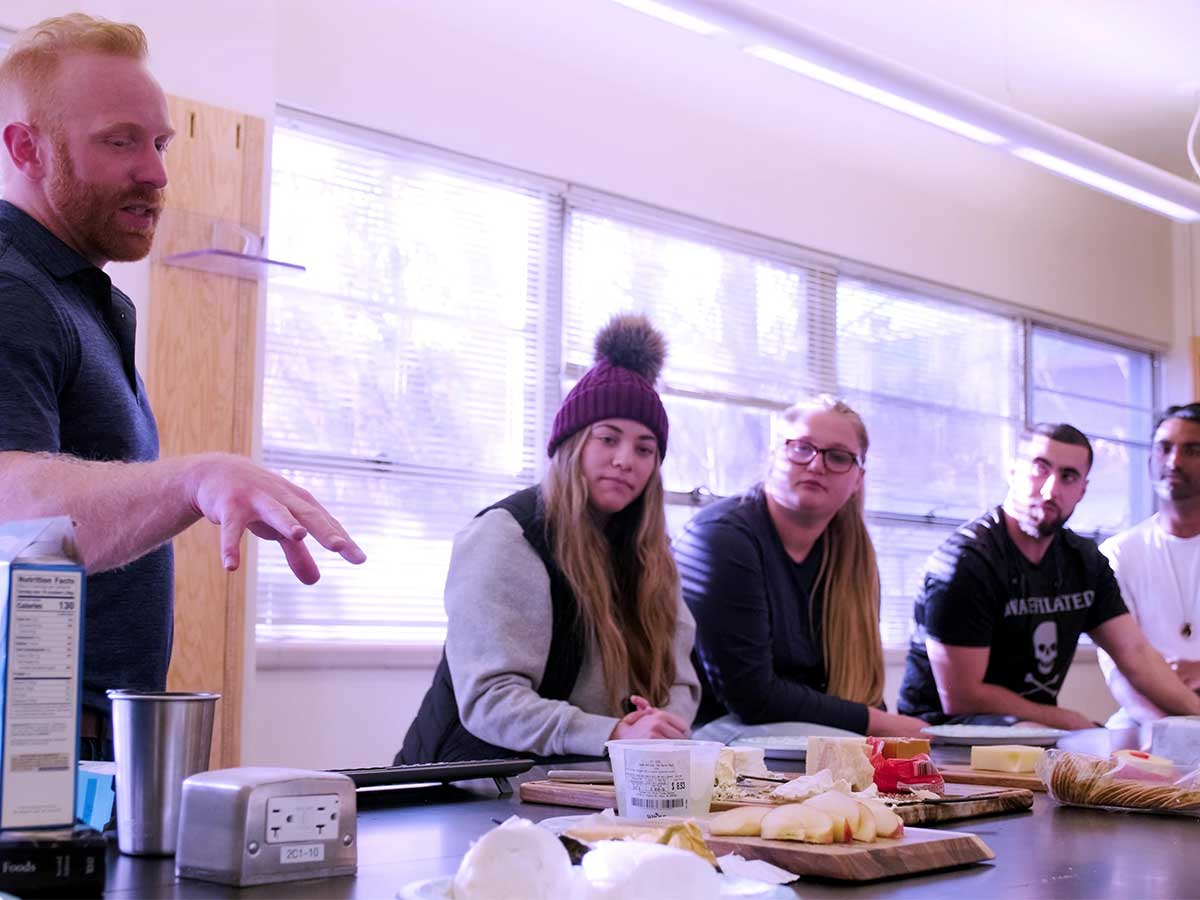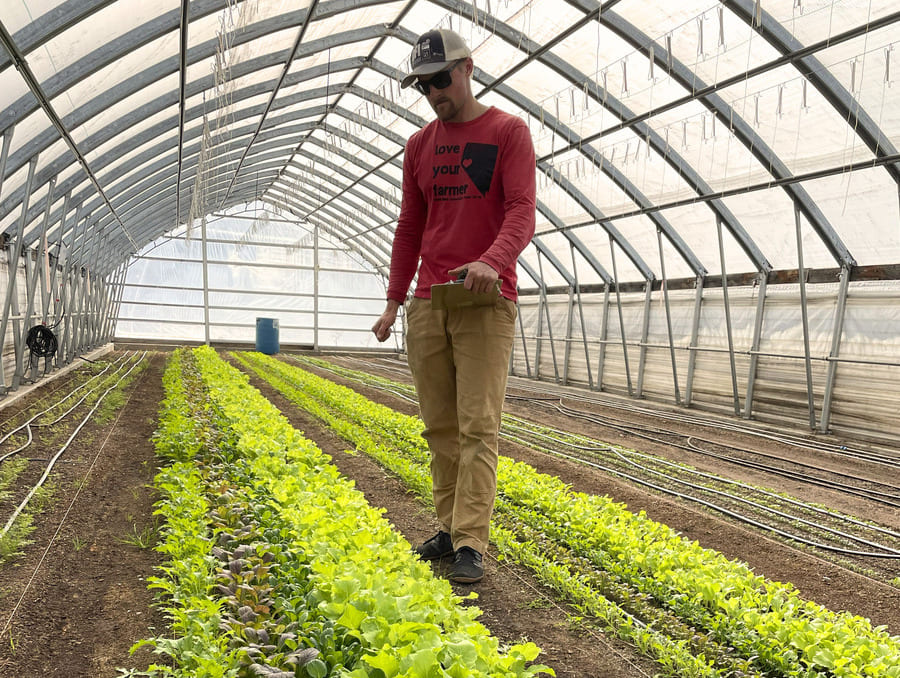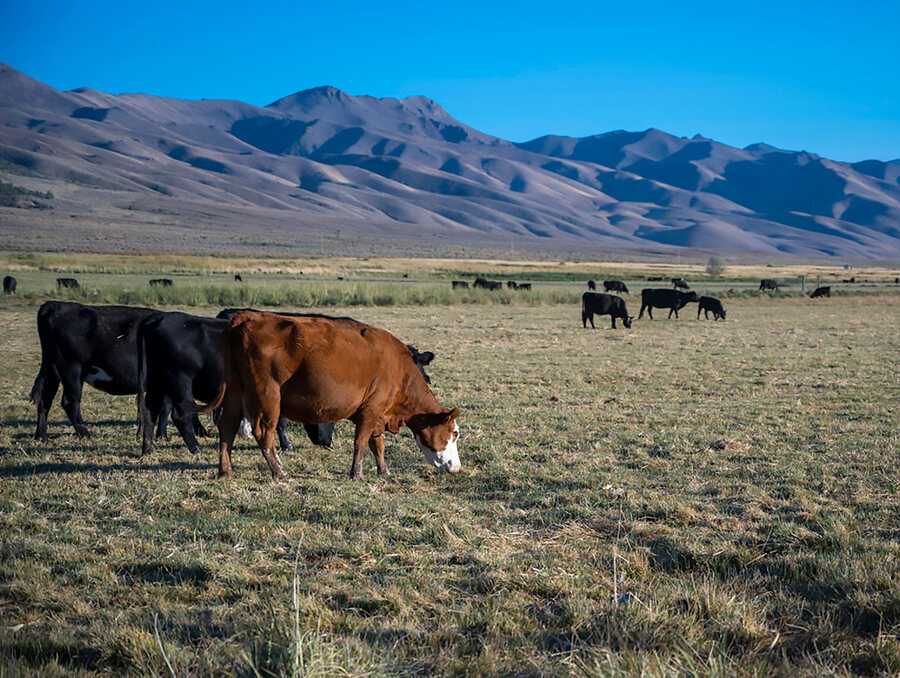The College of Agriculture, Biotechnology & Natural Resources' Department of Nutrition unveiled its newly renovated Nutritional Science Laboratory this semester.
“The space now better meets the needs and desires of students for hands-on experiences,” Instructor Maureen Molini said. “Students are looking for experiential learning. They want to do it themselves. This enhances the educational experience.”
The facility features eight powered lab stations, as well as high-definition video monitors and improved climate control. The changes foster a hands-on and collaborative environment in which students engage with nutrition in an exciting and effective way.
“Demonstrations help students see food science concepts come to life,” Molini said. “Rather than just reading and hearing about the concepts, our students have food-based exposure to them.”
In the lab, students face each other around workstations. This encourages them to study and explore new ideas together, developing teamwork and innovation skills.
“Students are interacting more,” Didactic Program in Dietetics Director Jolyn Wirshing said. “It’s social and fun.”
Large video monitors around the room ensure everyone can easily see course curricula and lab instructions. This supports students in learning and trying their hands in hands-on nutritional science.
“Experiences in the lab help students understand the science, the chemistry, of what is happening within their food,” Molini said. “It enables them to explain what the food is, where it comes from, why we eat it, why it's nutritionally significant.”
Highlights of what is available to students in the updated space include:
- Measuring equipment, such as a height board and food and bodyfat scales.
- Nutritional science equipment, including lower-temperature convection ovens for determining the water activity of food; and appliances, such as hot plates, blenders and microwaves.
- Fresh, perishable supplies and more.
In the lab and associated lectures, students explore topics such as the scientific method; nutrition’s role in health, chronic-disease prevention, and fitness and sports; issues impacting the food and supplements industries, and public safety; healthy diets, energy balance, undernutrition and eating disorders; food and culture; food science; and more.
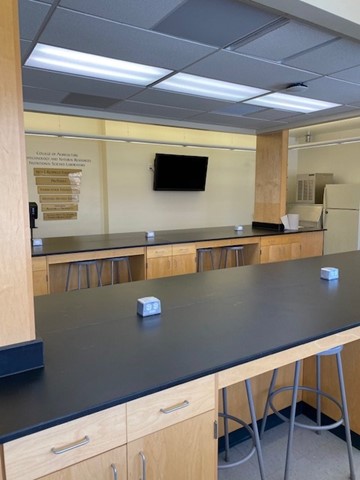
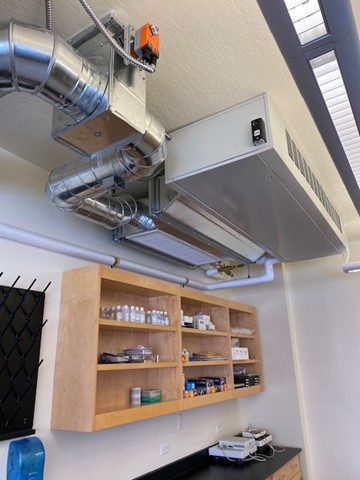
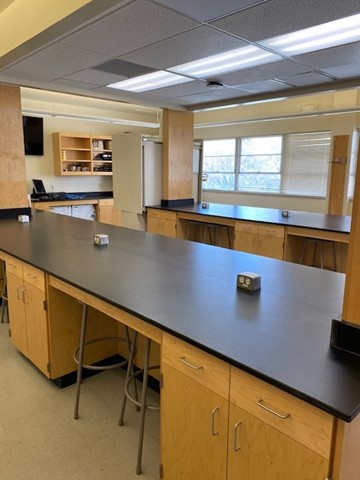
Highlights of what is available to students in the updated space include eight powered lab stations, high-definition television screens, measuring and nutritional science equipment, and more. Photos by Jamie Benedict.
Life-changing labs for undergraduates
The remodeled space impacts the University’s undergraduate population as a whole, as it’s available to them through courses such as Nutrition 121: Human Nutrition.
“Nutrition 121 is a really sought-after class on campus,” Wirshing said. “It helps nonscience majors, such as education and business majors, get their science lab credits.”
But the class is not just a box to check.
“I approach this as a life-changing class,” Wirshing said. “This is something you can use, that you can relate to yourself immediately.”
The class is taught spring, summer and fall to about 400 students per semester. In addition to lecture, the course also features four hands-on experiences that students complete in the remodeled Nutritional Science Laboratory in smaller groups.
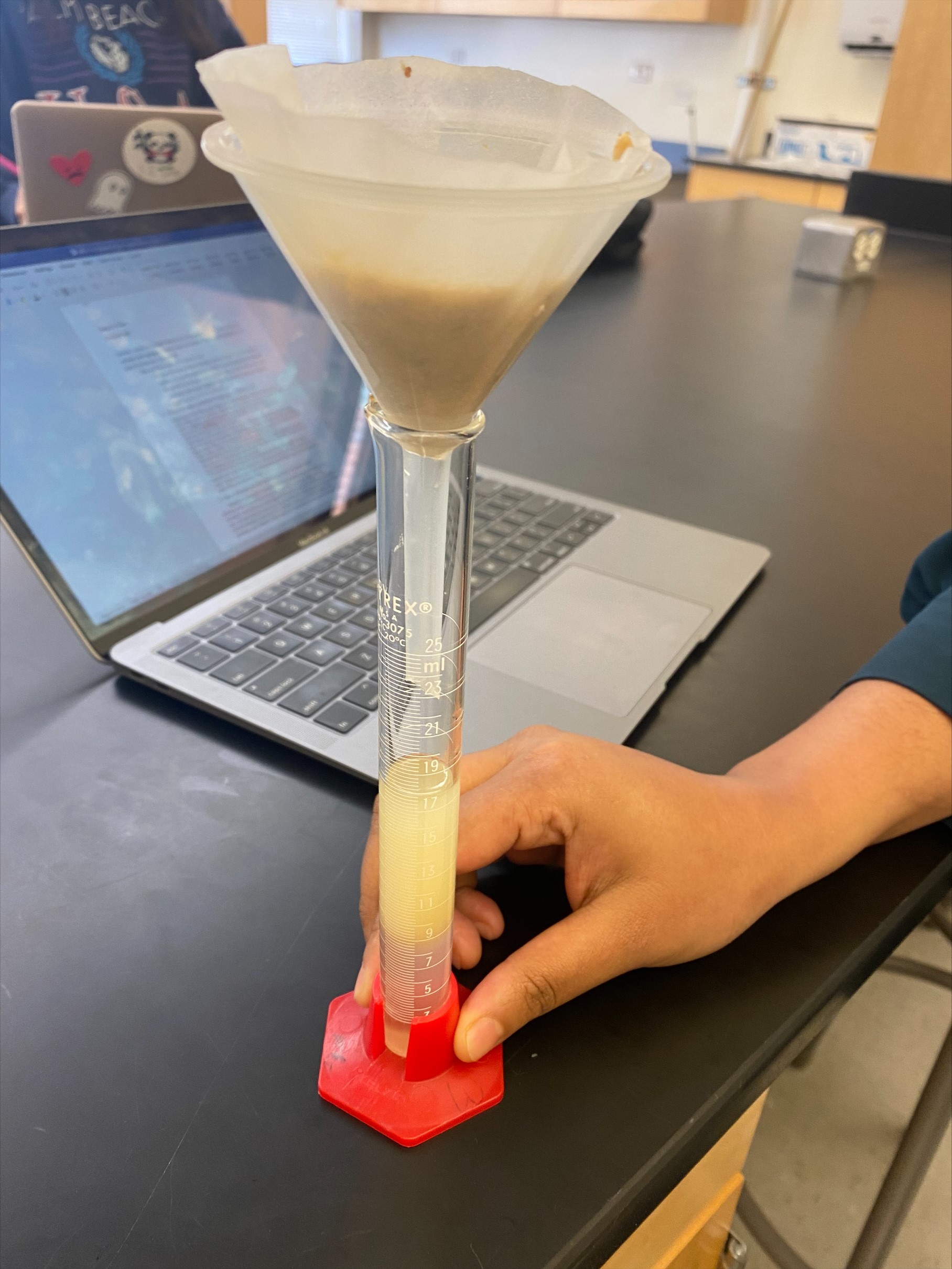 During the fat analysis lab, students analyze the grams of fat in meals they commonly eat. Photo by Jolyn Wirshing.
During the fat analysis lab, students analyze the grams of fat in meals they commonly eat. Photo by Jolyn Wirshing.“The lab provides hands-on and individual attention,” Wirshing said. “It makes students feel like they have a closer connection with instructors and teaching assistants.”
The labs explore body measurement; food labels, portions and portion distortion; the students’ diets; and fat analysis of food.
“In the fat analysis lab, we take meals from places students commonly eat, such as Panda Express or Raising Cane’s Chicken Fingers, and we use ethanol to pull the fat out of the meal,” Wirshing said. “The students can see the fat separate from the food, analyze the grams of fat and compare what came out to what’s on the menu.”
Nutrition graduate student Irene Richardson teaches this lab.
She said, “Having the space for students to be hands-on and closely analyze key aspects of nutrition, such as the fat content of certain fast foods, with lab-associated instruments, really drives home the teachings.”
Linking students, food and science
Other courses, such as Quantity Food Purchasing, The Science of Fermented Foods and Principles of Food Science, also use the lab. This is important in a culture that is disconnected from its food.
“At least half of the typical American food budget is spent on food that's prepared away from home,” Molini said. “The collateral damage is that we have less engagement with our food. We don't prepare it, much less understand where it comes from. Being in the lab helps our students to get that exposure and learn about our food systems and about our food itself.”
In Principles of Food Science, a class for future nutritionists, the labs link science to the real world.
“We talk about the science of food and how it relates to industry and their own experiences,” Molini said. “For example, because we’re now able to inhibit a natural reaction called enzymatic browning that happens when you expose cells to air, we’re able to buy guacamole that looks bright green in the package.”
Molini’s students explore enzymatic browning in the lab. They blanch apples in hot water, wrap them in plastic or treat them with lemon juice. Then, they measure each methods’ effectiveness in preventing browning.
Molini also explores the water activity of food with her students.
“Food companies do a lot to control water activity of foods,” she said. "For example, it takes a lot of food science to prevent the moisture in Raisin Bran’s raisins from moistening the brand flakes, to maintain the crunchiness of the flakes and the chewiness of the raisins.”
In his The Science of Fermented Foods class, Assistant Professor Steven Frese showcased a wide variety of cheeses in the remodeled space to connect differences in production and fermentation processes discussed in class to the texture, smell and taste of the cheeses. Afterward, nutrition student Kavin Sivakumar said he had a good time learning about and tasting the various cheeses.
“I really enjoyed the cheese lab,” he said, “It was a lot of fun.”
That fun is a labor of love.
“There's a lot of pounding the pavement every week to get those fresh, perishable supplies,” Molini said. “But students love food and love interacting with it.”
Providing a living legacy for learning
The modernized lab resides on the second floor of the University’s Sarah Fleishmann Building, which was constructed in 1956 and named for Sarah H. Fleischmann, wife to food industry executive Max C. Fleischmann.
The recent changes to the space were led by Department of Nutrition Chair Jamie Benedict. They build on work begun in 2008 by her predecessor, now-Experiment Station Director Chris Pritsos, with funding from the Nell J. Redfield Foundation, ProThera, Fairweather Foundation, Western Nevada Supply, Vitamin Research Products and Washoe County Medical Society.
“The original Nutritional Science Laboratory project’s goal was to provide a first-class laboratory experience for students interested in learning about the science of nutrition,” Pritsos said. “The current remodel takes the laboratory experience to the next level and allows us to continue to provide our students with state-of-the-art experiences.”
The pair’s work on the lab ensures the College is able to provide high-quality teaching and research programs.
“The Accreditation Council for Education in Nutrition and Dietetics regularly evaluates our department’s efforts to educate our students,” Molini said. “It’s rigorous. It’s the push you need to stay on top. This remodel is in support of continuing to earn that accreditation.”
Staying on top benefits faculty and students alike.
Richardson said, “The lab has become a very comfortable space for me to hone my teaching skills, and it further improves the learning atmosphere for students.”
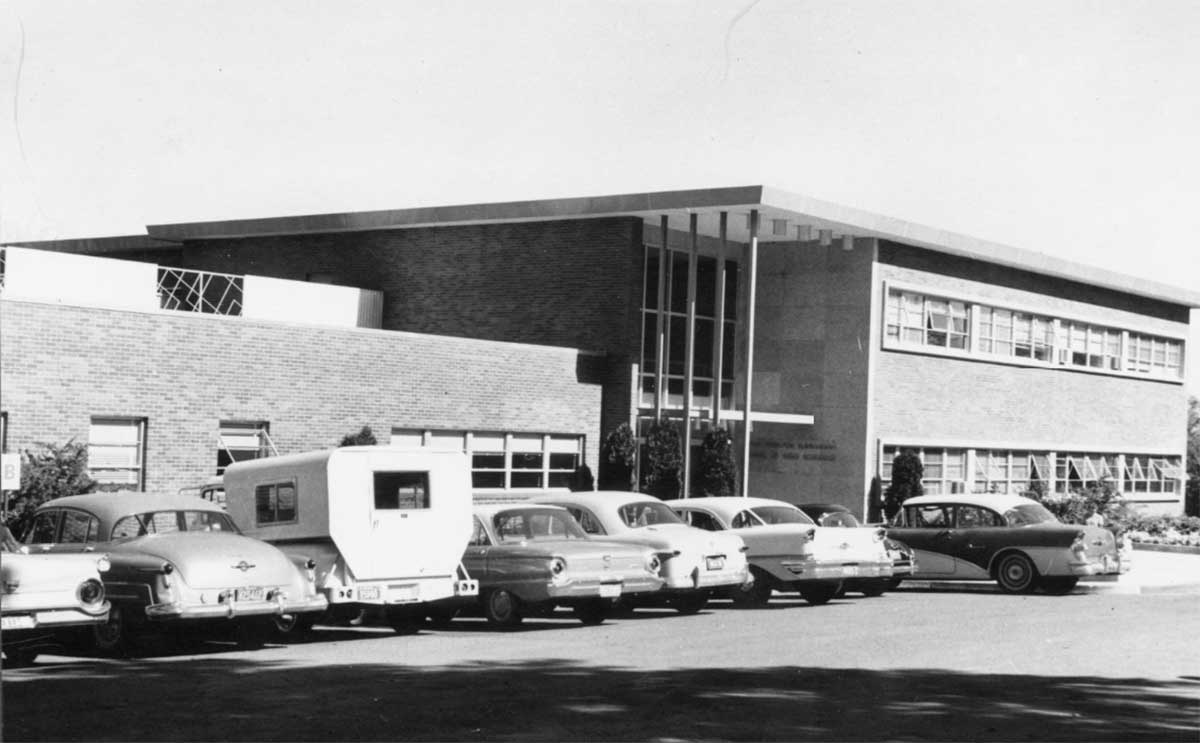 The newly remodeled lab resides on the second floor of the University’s Sarah Fleishmann Building, pictured here ca. 1957.
The newly remodeled lab resides on the second floor of the University’s Sarah Fleishmann Building, pictured here ca. 1957.